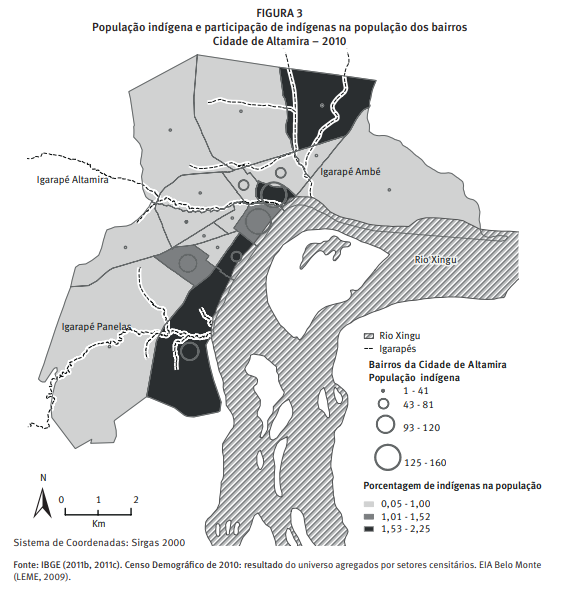Dinâmica demográfica da população indígena em áreas urbanas: o caso da cidade de Altamira, Pará
- Citation:
- Simoni A, Dagnino R. Dinâmica demográfica da população indígena em áreas urbanas: o caso da cidade de Altamira, Pará. Revista Brasileira de Estudos de População. 2016;33(2):303-26. copy at www.tinyurl.com/y7eqaujm
Abstract:
This paper focus on indigenous people in the municipality of Altamira, in the State of Pará, Brazil, emphasizing the presence of indigenous people in urban areas and especially in the city of Altamira. The purpose here is to understand the dynamics and movements of these populations in regard to the data produced about them and the data produced by them. For that, data from fieldwork are used, as well as the demographic censuses data of 2000 and 2010, produced by the Brazilian Institute of Geography and Statistics, and also information from surveys produced because of the construction of the hydroelectric plant of Belo Monte to identify the indigenous people living in the city. The paper intends to capture the processes by which the indigenous population has passed and still passes, highlighting the threats posed by the Belo Monte dam construction and by political forces that have put this population at risk. The results point to a growing presence populations in urban areas, mainly from the Juruna, Kuruaya and Xipaya ethnicities who once seemed to have decreased significantly, but underwent to a demographic recovery process in the city, associated with a political movement pivot around their ethnic identity since the 1990's.




 CV Lattes
CV Lattes
